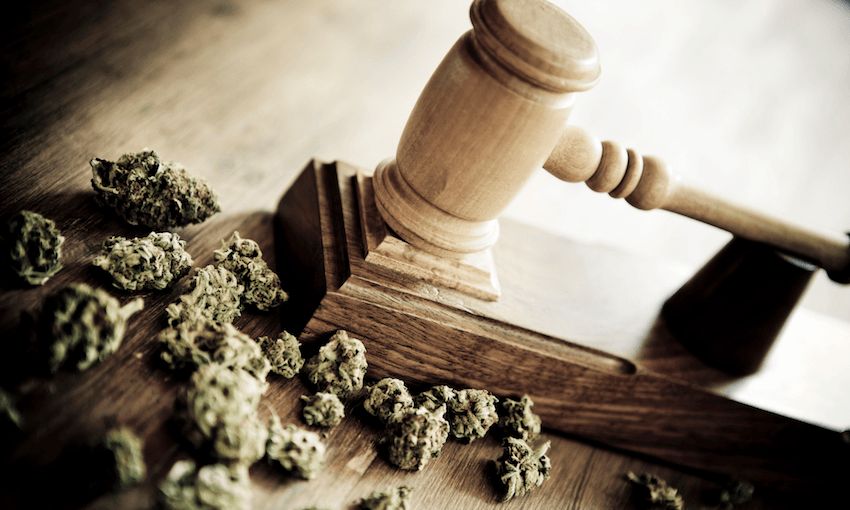From unequal conviction rates to a glimmer of light on synthetics, here’s what the Drug Foundation’s State of the Nation report tells us.
Reports of raids, drug busts and arrests appear in headlines every day. The next biggest methamphetamine seizure is guaranteed to grab attention. But with all the hype, it’s hard to make out what it means. So what’s really going on?
The Drug Foundation today published figures on drug use, treatment and criminalisation that shed some light on where Aotearoa is at with drugs. Our 2019 State of the Nation makes for sobering reading.
The report shows alcohol is still the most harmful drug in New Zealand. Methamphetamine use is an ongoing issue, and Māori continue to suffer disproportionately from the harms caused by alcohol and other drugs.
With a referendum around the corner to decide whether cannabis should be legalised, it’s well worth noting that around 334,000 adults regularly smoked cannabis in 2018. While it’s true that most people who use drugs – especially white, middle-class people – don’t get in trouble with the law, 3,969 people were still charged with a cannabis offence in 2018. A disproportionate number of those were young, Māori and male.
Your chances of a conviction also vary widely depending on where you live: conviction rates in the Bay of Plenty are double those in Waitematā and Otago/Southland. Your chance of being diverted away from court into restorative programmes like therapy, iwi-community panels and youth-aid referrals is also dependent on where you live. While over 60% of people with drugs charges in Otago/Southland and South Auckland are diverted into non-court action, only 40% of people living in Northland are.
Are we happy with a status quo in which some groups take the fall for everyone else? Is there a good defence for that in a democratic society? And does it maintain faith in our justice system? The only way to ensure everyone is treated the same is to decriminalise drug use entirely. We’d like to go one step further with cannabis – it’s time to legalise and put some proper controls around the way it is produced, packaged and sold.
Our report shows that our most vulnerable members of society are also more severely impacted by the harms that drugs can cause. It’s clear that many of those who have died from the use of synthetic cannabinoids over the past two years were unemployed or homeless, for example. Many live in desperate circumstances, using synthetics to help escape from reality.
Deaths from synthetics appear to have slowed for now, mostly because we’re seeing less of the most toxic variant entering our country – but they could start again at any moment. To prevent that happening, we need to address the underlying causes of poverty, homelessness and trauma. We would also be well advised to regulate less harmful substances, including cannabis, so that people must never make the choice to smoke something that may kill them, just to get through the day.
There is some cause for optimism though. A new amendment to the Misuse of Drugs Act, passed in August, means Police may now only prosecute someone for possession and use of drugs where they think it is ‘required in the public interest’. They must decide whether a health-based approach would be more beneficial instead. This is a great step forward and should mean more people get the support they need. We’re hopeful low-level drug offences will decrease or be eliminated altogether.
Unfortunately, in order to make good policy, New Zealand needs better drug use data. Our last comprehensive drug use survey was over a decade ago, and the New Zealand Health Survey only asks about drug use in the past year.
Collecting better data would give us accurate information to back up the debate around drug reform. With the cannabis referendum coming up, it’s crucial people understand what they’re voting for. We know New Zealanders are thirsty for information. Patrick Gower’s documentary On Weed tops the list of the most viewed programmes this year, garnering nearly a million views so far.
Having better data also means we’d be able to track the influence of a regulated cannabis market. Canada’s wealth of data shows that in the year since cannabis was legalised, use by young people hasn’t gone up as many feared it would. In fact, the average age of someone using cannabis has gone up to 38 years from 29 years in 2004. Legal cannabis also cuts into the black market, with 53% of people in Canada already getting their cannabis from legal sources.
Our experience shows people tend to back a ‘yes’ vote when they know what the government is planning for our regulated cannabis market, including a purchase age of 20 and no consumption in public places. To move on completely from the war on drugs and to eradicate unequal treatment of those who use drugs, New Zealanders need access to accurate information.
Kali Mercier is the policy and advocacy manager at NZ Drug Foundation which helps people access accurate information about drugs. Its State of the Nation 2019 report combines available drug data in New Zealand for a full picture on how New Zealand is dealing with drugs.



